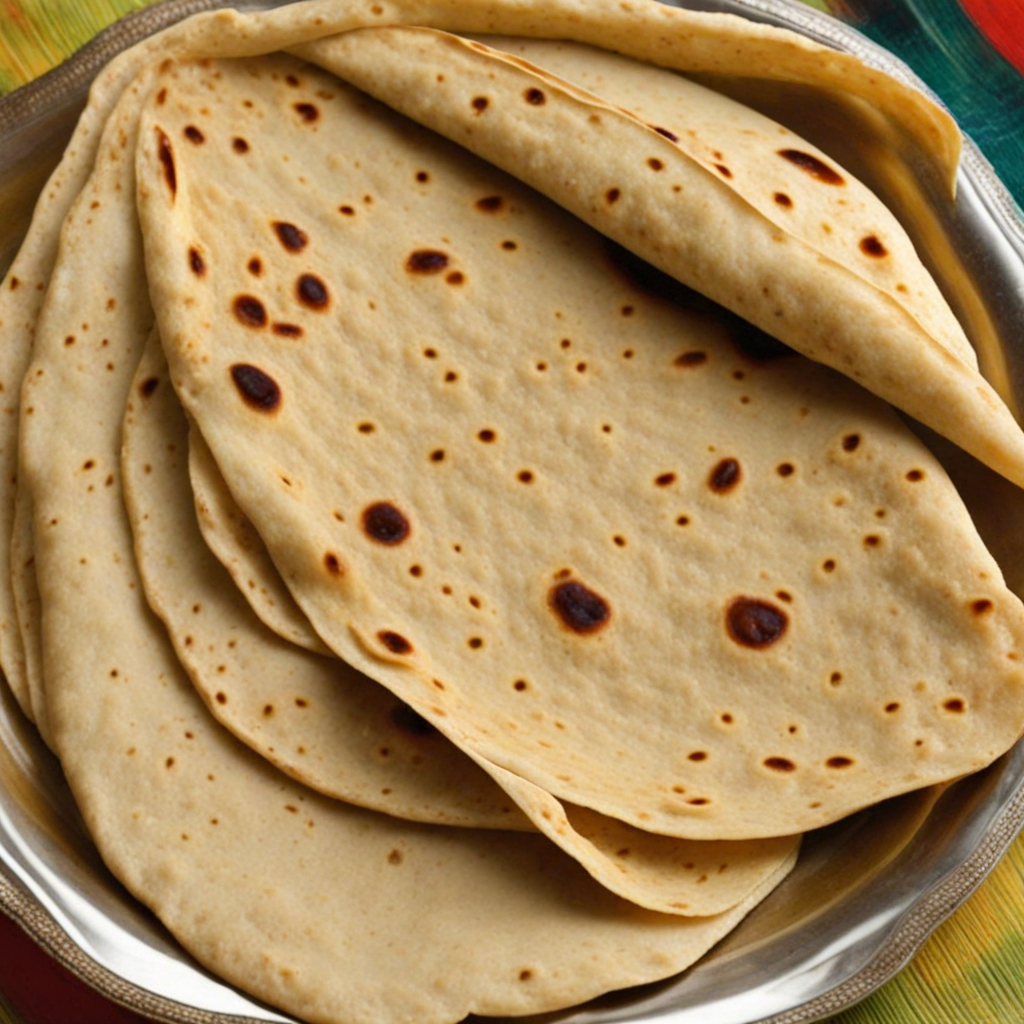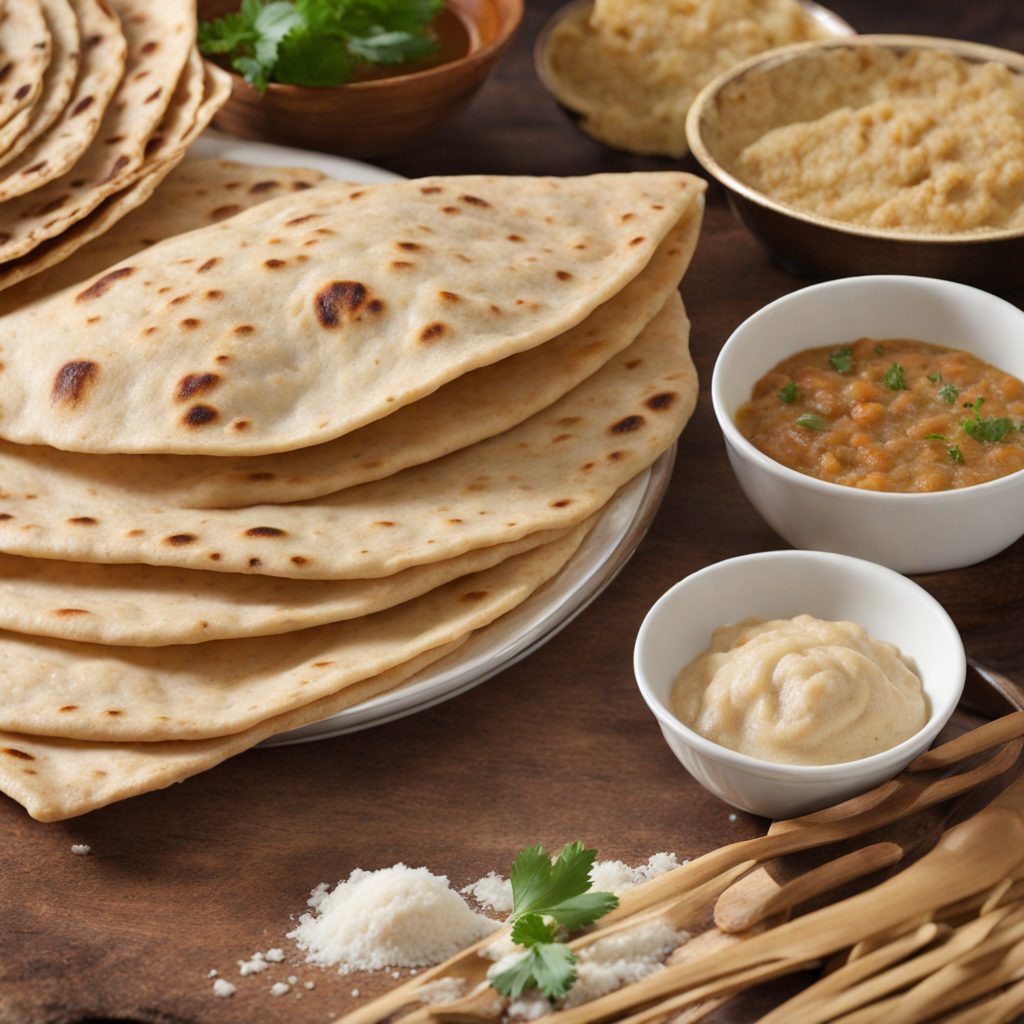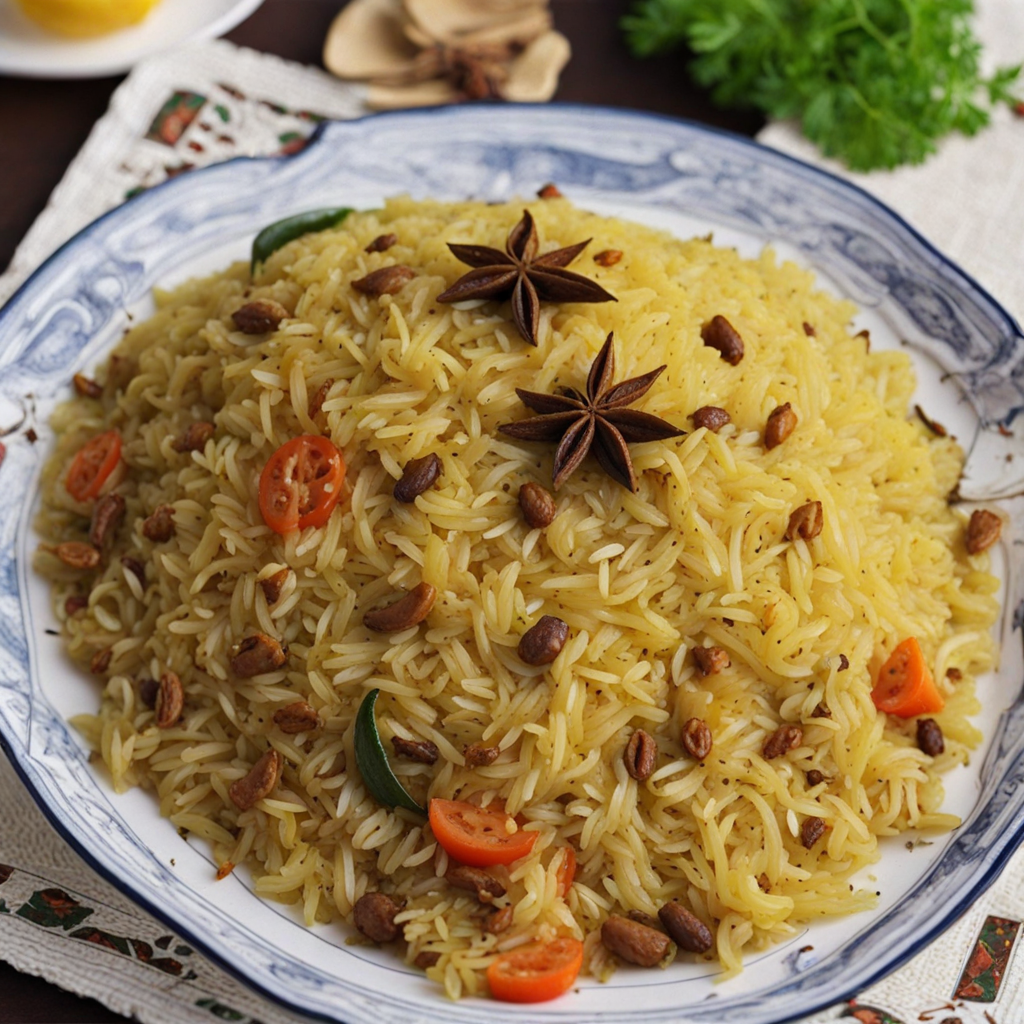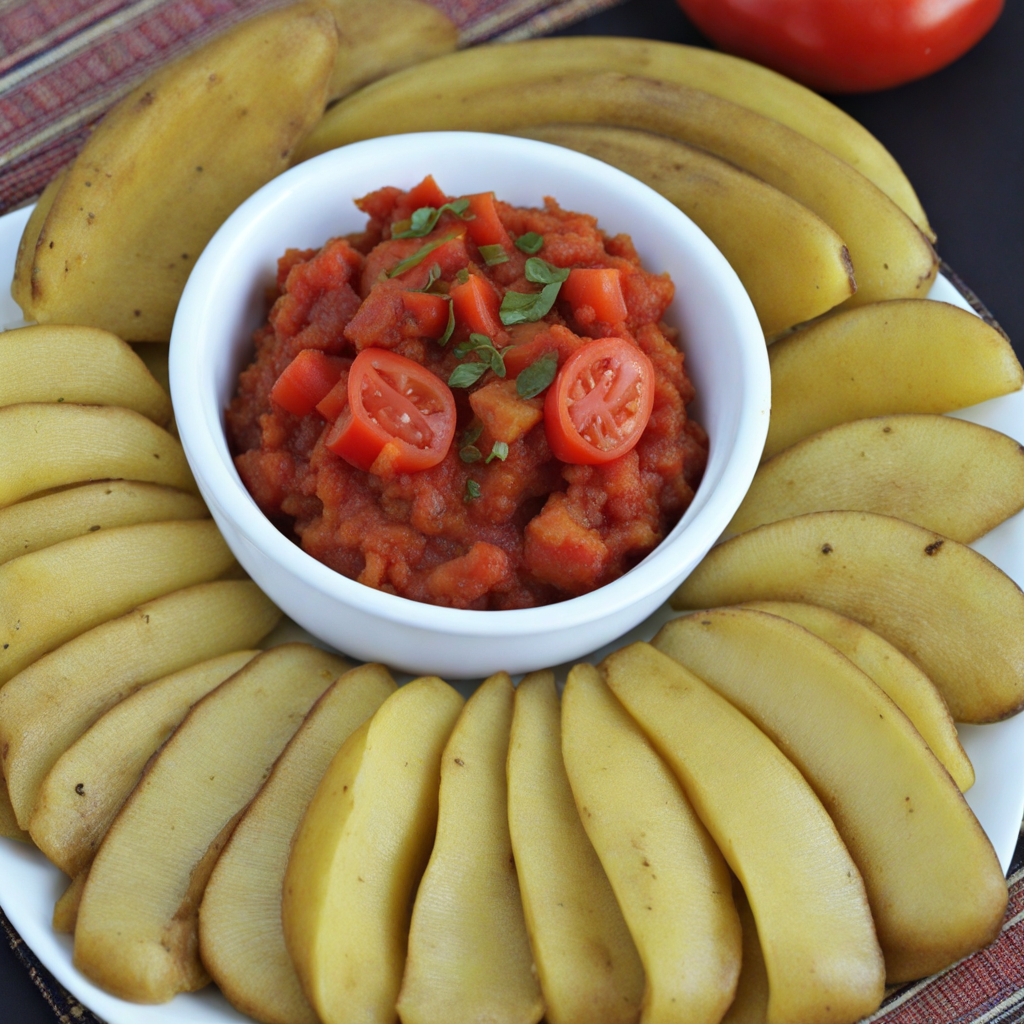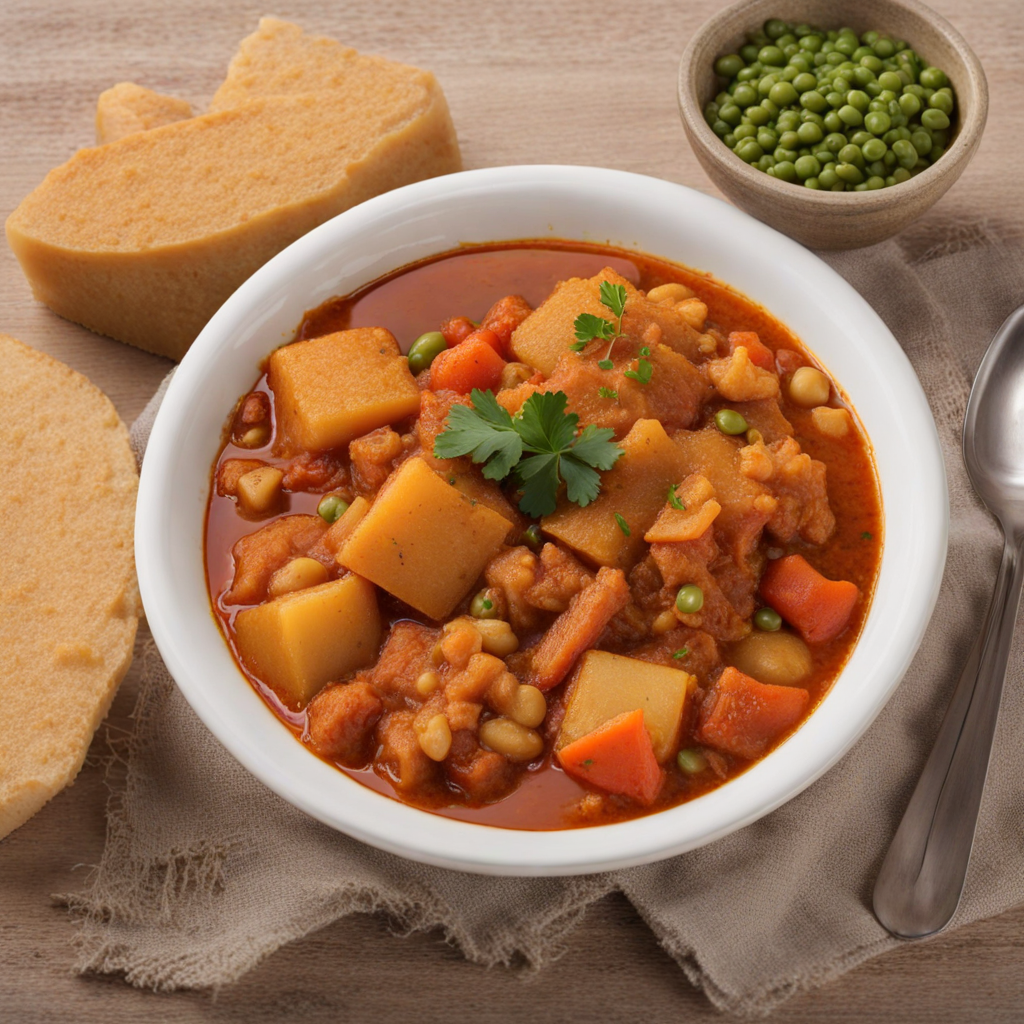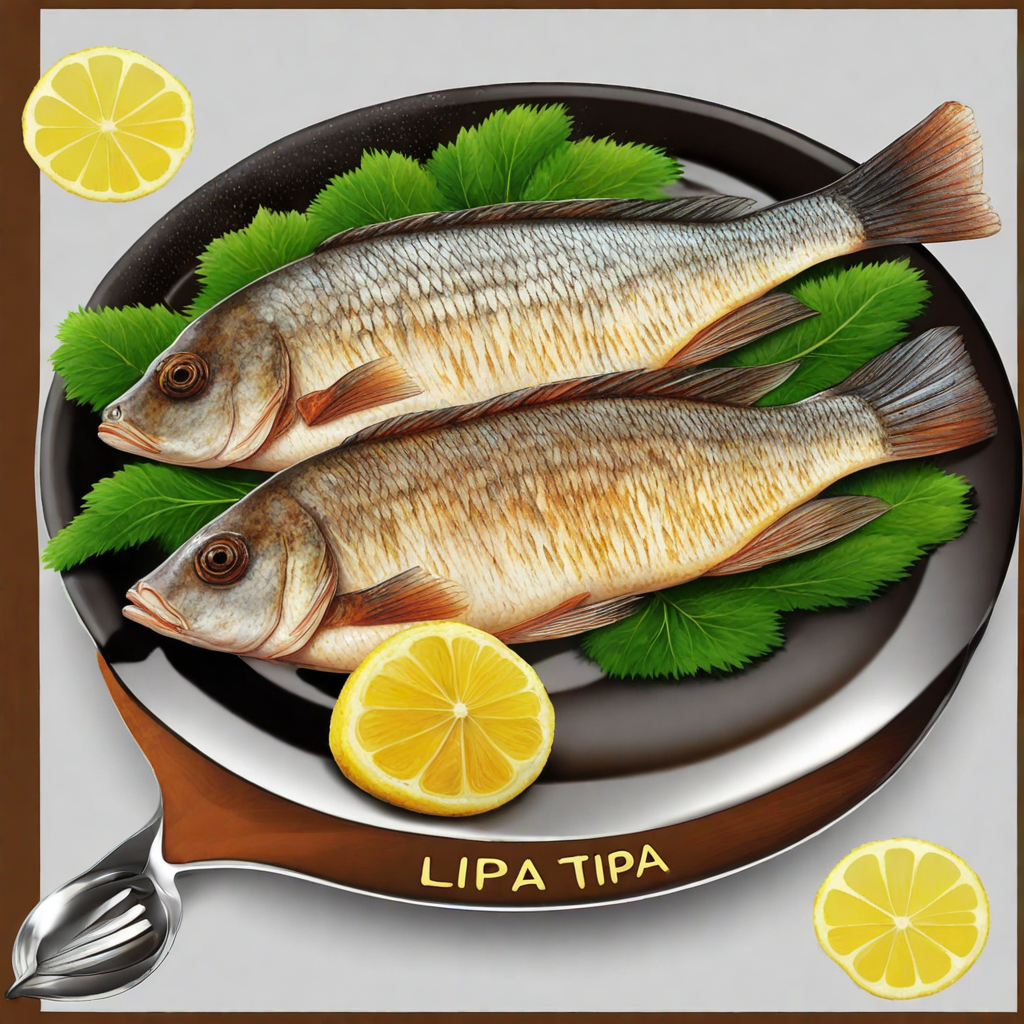Chapati
Chapati is a delightful unleavened flatbread that holds a special place in Kenyan cuisine. Made primarily from whole wheat flour, water, and a pinch of salt, the dough is kneaded to a smooth consistency and allowed to rest, enhancing its texture. When rolled out, it is thin yet sturdy, making it perfect for scooping up various dishes. The cooking process involves placing the rolled dough on a hot griddle, where it puffs up beautifully, giving it a soft and chewy interior with a slightly crispy exterior. The aroma of freshly cooked chapati wafts through the air, enticing anyone nearby to indulge in this staple food. This versatile bread is often enjoyed with a variety of Kenyan dishes, such as stews, curries, or vegetables, making it an essential accompaniment to many meals. The subtle nutty flavor of chapati complements the rich spices and bold flavors of the Kenyan cuisine, creating a harmonious balance. Whether served with a comforting bowl of sukuma wiki (collard greens) or a hearty meat stew, chapati acts as the perfect vehicle for savoring the delicious sauces and textures of the dishes it accompanies. It's a communal food, often shared among family and friends, enhancing the experience of dining together. In addition to its traditional role, chapati has also evolved into a popular street food option, with vendors offering it filled with various ingredients like eggs, beef, or vegetables, creating tasty wraps that cater to diverse palates. This adaptability makes chapati not just a staple, but also a beloved food for many, appealing to both locals and visitors. With each bite, one can experience the warmth of Kenyan hospitality and the rich cultural heritage that chapati embodies, making it a must-try for anyone looking to explore new flavors.
How It Became This Dish
Origins of Chapati Chapati is a type of unleavened flatbread that has its roots in the Indian subcontinent, specifically dating back to ancient times. The word "chapati" itself is derived from the Hindi word "chapat," meaning "to slap," which refers to the traditional method of shaping the dough into a flat, round disc by slapping it between the palms. While its exact origins are difficult to pinpoint, chapati is believed to have been introduced to East Africa through Indian traders and laborers during the 19th and early 20th centuries. As Indian immigrants settled in countries like Kenya, they brought with them their culinary traditions, including chapati. The flatbread quickly gained popularity among local populations, adapting to local tastes and dietary preferences. Over time, chapati became an integral part of the Kenyan diet, serving as a staple accompaniment to various dishes. Cultural Significance In Kenya, chapati holds a special place in both everyday meals and celebrations. It is often served during important events such as weddings, birthdays, and religious festivities, symbolizing hospitality and generosity. The act of sharing chapati with guests is seen as a sign of respect and warmth, reinforcing social bonds within communities. Chapati is also significant in the culinary landscape of Kenya because it transcends ethnic boundaries. While it may have originated from Indian cuisine, it is enjoyed by various ethnic groups including the Kikuyu, Luo, and Luhya people. Each community has incorporated chapati into their traditional meals, often pairing it with locally influenced dishes such as sukuma wiki (collard greens), stews, and various meat preparations. This adaptability has solidified chapati’s status as a unifying food across Kenya's diverse cultures. Development Over Time As chapati became entrenched in Kenyan culture, its preparation and consumption evolved. Traditionally, chapati was made using whole wheat flour (atta), water, and a bit of salt, which were kneaded into a soft dough. The dough would then be rolled out into flat discs and cooked on a hot griddle called a "sufuria" or "tawa." Over time, variations began to emerge, influenced by local ingredients and culinary practices. In modern Kenyan kitchens, chapati has seen various adaptations. Some cooks incorporate baking powder to create a lighter texture, while others may add ingredients like milk or oil to enhance flavor and richness. The introduction of additional fillings, such as vegetables or spiced potatoes, has also become popular, leading to the creation of stuffed chapatis that reflect Kenya’s rich agricultural diversity. Global Influence The global diaspora has further influenced the evolution of chapati. As Kenyans have migrated worldwide, they have taken their culinary traditions with them, introducing chapati to new audiences. In places like the United States, the United Kingdom, and Canada, chapati has found a place in the diets of not only the Kenyan diaspora but also among those interested in global cuisines. Restaurants and food stalls featuring East African cuisine often showcase chapati as a highlight, pairing it with curries and grilled meats that echo its Indian roots. In addition to its culinary appeal, chapati has also become a symbol of resilience and adaptation. The ability of this flatbread to evolve while maintaining its core identity speaks to the broader narratives of globalization and migration. As cultures intermingle, foods like chapati serve as a reminder of the interconnectedness of human experiences. Chapati in Contemporary Kenya Today, chapati continues to be a beloved staple in Kenyan households. It is often made during family gatherings, where the process of rolling and cooking chapati becomes a communal activity, fostering connection and collaboration among family members. Street vendors and local eateries also play a crucial role in popularizing chapati, offering it as an affordable and accessible option for people on the go. Furthermore, chapati has become synonymous with Kenyan street food culture, frequently served with a side of spicy meat or vegetable curry. It is common to see chapati being sold alongside other local delicacies, making it a versatile choice for both locals and tourists alike. Health and Nutrition From a nutritional standpoint, chapati offers several benefits. Made primarily from whole wheat flour, it is a good source of complex carbohydrates, dietary fiber, and essential nutrients. The absence of yeast or leavening agents means that chapati is lower in calories compared to other types of bread, making it a popular choice for health-conscious individuals. The use of whole grains in chapati contributes to a balanced diet, providing energy and supporting digestive health. Pairing chapati with a variety of vegetables, legumes, and proteins enhances its nutritional profile, making it a well-rounded meal option. Conclusion and Future of Chapati As culinary traditions continue to evolve in response to global influences, chapati will likely endure as a beloved staple in Kenya and beyond. Its adaptability, cultural significance, and nutritional benefits ensure that chapati remains relevant in an ever-changing food landscape. Whether enjoyed in a traditional setting or as a contemporary street food, chapati stands as a testament to the rich tapestry of Kenyan culinary heritage, bridging the past and the future through its simple yet profound existence on the dining table.
You may like
Discover local flavors from Kenya


